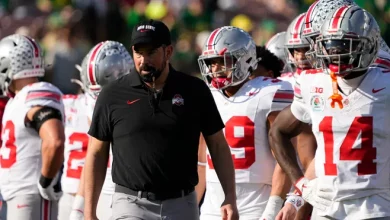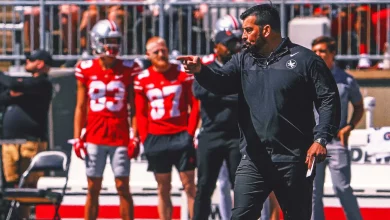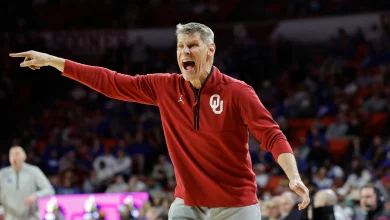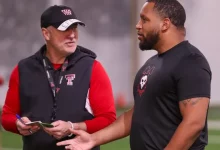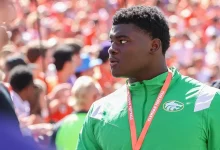Texas boasts a top-three SEC running back room, blending elite talent, depth, and explosiveness to dominate both ground game and versatility.

The Texas Longhorns’ entrance into the Southeastern Conference (SEC) has brought considerable discussion regarding how the program stacks up against its new competition. Nowhere is this discussion more relevant than in the evaluation of Texas’ running back room — a unit that stands among the most talented and complete in the conference. With a combination of high-ceiling talent, proven production, depth, and scheme versatility, Texas possesses a backfield that legitimately ranks among the top three in the SEC entering the 2025 season.
Historical Context and Program Legacy
Texas football has a long-standing tradition of producing elite running backs, with names like Earl Campbell, Ricky Williams, and Jamaal Charles forming part of the program’s rich legacy. That tradition has experienced a resurgence in recent years, culminating in dominant ground performances on national stages. Most notably, Texas rushed for nearly 300 yards in the 2024 College Football Playoff, showcasing a physical, explosive, and well-coached rushing attack.
This return to national prominence has been orchestrated in part by Head Coach Steve Sarkisian, who has implemented a system that emphasizes balance, spacing, and leveraging running backs in both the ground and passing games. Within this structure, Texas has developed a stable of backs who not only excel in traditional rushing roles but also as pass-catchers and mismatch creators against linebackers and safeties.
Quintrevion Wisner: The Steady Force
Leading the group is junior Quintrevion Wisner, who emerged as the workhorse in the 2024 season. Finishing with over 1,000 rushing yards and multiple 100-yard performances against top-25 defenses, Wisner brings power, vision, and consistency to the backfield. His ability to press the line of scrimmage and read developing blocks has made him an effective zone runner, while his durability and pass protection skills make him a true three-down back.
Wisner’s production is especially notable considering he split carries for much of the season, yet still managed to earn all-conference recognition. In a league known for punishing fronts and elite linebacker play, his efficiency — both in terms of yards after contact and success rate — sets him apart from many peers.
CJ Baxter: Five-Star Talent on the Rise
Behind Wisner is CJ Baxter, a sophomore who brings explosiveness and upside. A former five-star recruit out of Florida, Baxter’s early career was slowed by minor injuries, but his flashes in 2024 hinted at elite potential. He brings lateral quickness and acceleration that allow him to reach the second level with ease. Baxter also demonstrated soft hands and route-running ability, particularly in Texas’ screen game and third-down packages.
His development over the offseason has positioned him to play a much larger role in 2025. In particular, his performance during spring practices and scrimmages earned praise from the coaching staff, and his versatility fits well within Sarkisian’s tendency to use pre-snap motion and multiple formations to create favorable matchups.
Jerrick Gibson: Immediate Impact from a Freshman
True freshman Jerrick Gibson arrived on campus with considerable hype, and through spring and early summer workouts, he has lived up to it. Gibson’s freshman campaign showed off elite acceleration, vision, and footwork. He finished the year with nearly 400 rushing yards and multiple touchdowns despite being the third option in the rotation. His ability to create explosive plays, even in limited touches, brings an X-factor to the group.
Gibson has already proven capable of contributing against high-level competition. His performances in spot duty during conference play suggested a level of poise and readiness rarely seen in first-year players. With a full offseason in the strength and conditioning program, Gibson is expected to see an uptick in workload and production.
Depth Beyond the Starters
Depth is often the separating factor between a good running back room and a great one. Texas is fortunate to have both top-tier talent and quality depth throughout its roster. Redshirt freshman Tre Wisner and veteran Keilan Robinson provide valuable experience and situational versatility. Wisner, in particular, has drawn attention for his balance and cutback ability, which mirrors the traits of older backs in the program. Robinson, a transfer from Alabama, brings SEC experience and can contribute on special teams, in addition to being a reliable receiving threat out of the backfield.
Having multiple backs capable of starting at most SEC programs allows Texas to maintain high efficiency and effectiveness, even when rotating personnel or dealing with injuries — a critical factor in surviving the physical demands of the SEC schedule.
Schematic Versatility and Coaching
One of the major advantages Texas holds is the strategic vision and creativity of Head Coach Steve Sarkisian and Running Backs Coach Tashard Choice. Sarkisian’s offense is built on adaptability, and the running back room is central to that philosophy. The ability to align multiple backs in various formations, motion them across the formation, and involve them in the passing game creates mismatches and keeps defenses off-balance.
Choice has been instrumental in developing the group’s fundamentals, vision, and physicality. Under his guidance, Texas running backs have improved their ball security, blocking technique, and ability to read defenders post-snap. This has translated into not just big plays, but consistent chain-moving runs — a key ingredient for maintaining drives in tough SEC environments.
Comparison Across the SEC
When compared to other top SEC running back rooms, Texas matches or exceeds the competition in several key metrics. Programs like Georgia and Alabama have deep and talented backfields, but Texas arguably possesses a better blend of proven production and upside. Georgia’s Kendall Milton and Alabama’s Justice Haynes are elite backs, but Texas can counter with a trio of players who each have the potential to rush for 1,000 yards.
Additionally, few other SEC teams have three backs with such complementary skill sets. Wisner provides power and reliability. Baxter offers versatility and explosion. Gibson brings breakaway speed and shiftiness. Together, they form a unit that can adapt to any defensive front or game situation.
Texas also holds an edge in how its running backs are integrated into the broader offense. Unlike programs that rely heavily on a feature back, Sarkisian’s system distributes touches in a way that keeps legs fresh and maximizes efficiency. This approach not only reduces wear and tear but also keeps opposing defenses guessing.
Physicality and SEC Readiness
A legitimate concern in transitioning from the Big 12 to the SEC involved whether Texas’ roster — especially its skill players — could withstand the week-to-week physicality of the conference. The running back room has answered that question convincingly. With a mix of size, strength, and durability, the top backs on the roster have proven capable of handling extended workloads against physical defenses.
Wisner, in particular, demonstrated that he can be effective between the tackles and in short-yardage situations. Baxter and Gibson both showed resilience in absorbing contact and bouncing off tacklers. As a unit, they offer the kind of toughness and competitiveness required to survive the SEC grind.
Outlook for 2025 and Beyond
Heading into the 2025 season, expectations are high for Texas — both as a team and specifically for the running back group. With returning experience, high-end recruiting, and a system designed to feature multiple backs, Texas is positioned not only to have one of the best running games in the conference but also to contend for a College Football Playoff berth once again.
The future also looks bright. Gibson’s emergence as a freshman, combined with Texas’ ongoing success in recruiting elite backs, suggests that this level of excellence will be sustainable. The pipeline is strong, and the coaching infrastructure is in place to continue developing high-level talent.




